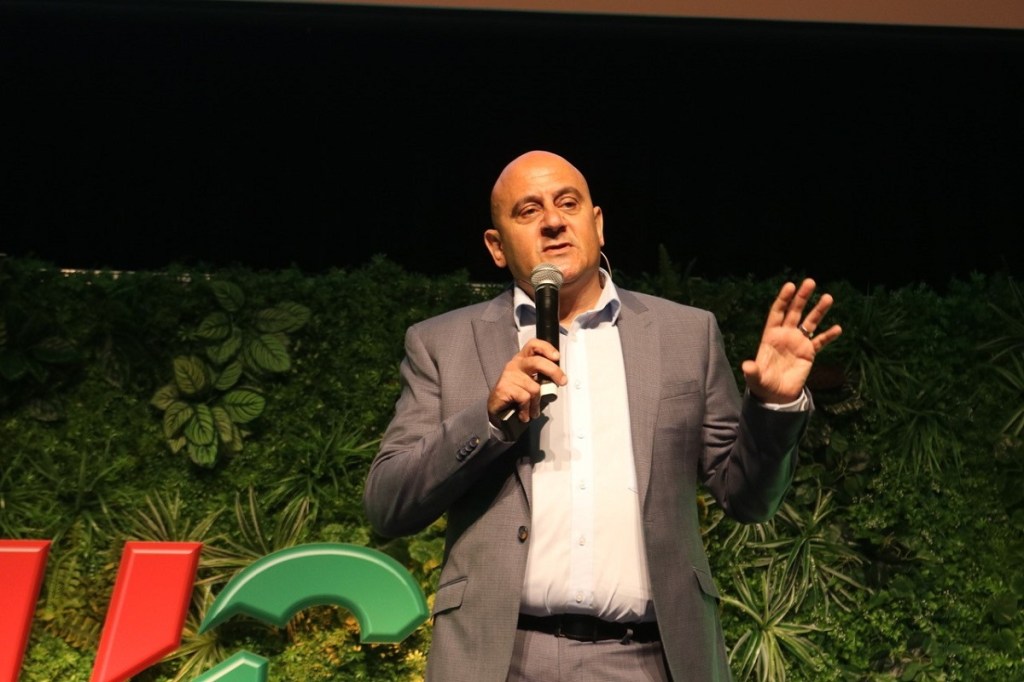Theo Foukkare, CEO of the Australian Association of Convenience Stores (AACS) presented findings from the recent State of the Industry Report.
Speaking to retailers at the 2022 UCB National Member Conference and Trade Show, Foukkare discussed the importance of making their store the destination of a consumer’s journey, not simply a stopping point.
“Over the next 10 years, what you’re going to see is the behaviour of the customer changing, they’re going to come to you for different reasons, you’re not going to be a stop on their journey, you need to become the reason they come into your store.
“Technology is going to drive this, and it should happen seamlessly. If you aren’t investing in technology, if you’re not offering customers deals that are going to make them happy based on what they buy, you’re going to have a problem. This is the level of change that the industry needs to move towards.”
Foukkare discussed the challenges of enticing customers to purchase products with rising fuel prices.
“Collectively, shop and fuel, is a bit over $42 billion which is 19 per cent up on the prior year, which is really just picking up on what we lost in the prior year, which was driven by changes in the industry around price.
“Total margin was $8 billion, up six per cent on the prior year. So, we sold a bit more, mainly fuel or fuel plus transactions, while merchandise only transactions were slightly down.”
Foukkare said fuel sales increased in volume by four per cent, which is 860 million litres more, but were still down 11 per cent on 2019 pre-Covid numbers.
“We haven’t got the mobility back that we had, so there’s still opportunity. The average price of fuel was up 20 per cent, at $1.47, but it’s obviously sitting higher than that now. Looking at the litres per transaction, we’re down 2.4 per cent. There’s been a change in behaviour, customers were putting less in probably because they weren’t driving as much, and money was tighter.”
Looking in-store, Foukkare said shop sales grew two per cent totalling $9.4 billion, driven by more food sales with better management and packaged beverages.
“Packaged beverages had an 11 per cent growth, that’s incremental sales in one year of $223 million, which is very significant. Another important category is food service which was a standout, adding $108 million, on top of the $71 million growth the prior year.
“I’m talking about take home sandwiches, the hot box, and prepared foods. It really comes down to putting energy into people’s bodies, people need to eat, people need to drink. And these are the areas that we’re really getting growth out of.”
The industry’s ability to still be able to drive growth with a high bowser price on fuel, a 3.7 per cent drop in tobacco sales, and circumstances where mobility was effectively gone, Foukkare said was a testament to the ability to achieve anything you sent your mind to.
Speaking of the challenges facing the industry, Foukkare highlighted labour shortages, fuel prices, supply chain issues, and inflation.
“Labour shortages, it’s so hard to find staff. Fuel prices, we’re dealing with factors outside of our control. Supply chain, it’s hard enough to get it into the country but now it’s also hard to get it on a truck and out of onto the shelf. Then inflation, the numbers are pretty concerning.”
Foukkare also mentioned the importance of retailers preparing for electric vehicles. He said this won’t happen overnight but advised retailers to get on the front foot, so the transition is not as big of a shock.
“You need to start being prepared for how this is going to look in your store, what your offer is going to look like, and how you’re going to change. And it’s not happening tomorrow. It’s about being ready for where we’re moving to and what steps need to be taken to actually get there, so we’re ready for it.”
“What changes are the customers going to make to their behaviour in regard to fuelling their vehicle. Remember, not everyone can charge at home. People live in apartments and townhouses. Don’t expect to see a charging facility at every work carpark. It’s just not physically possible. We may get there in 50 or 60 years, who knows. But our channel is going to play an important role in public infrastructure to be able to provide energy to get people moving and keep them going.”

